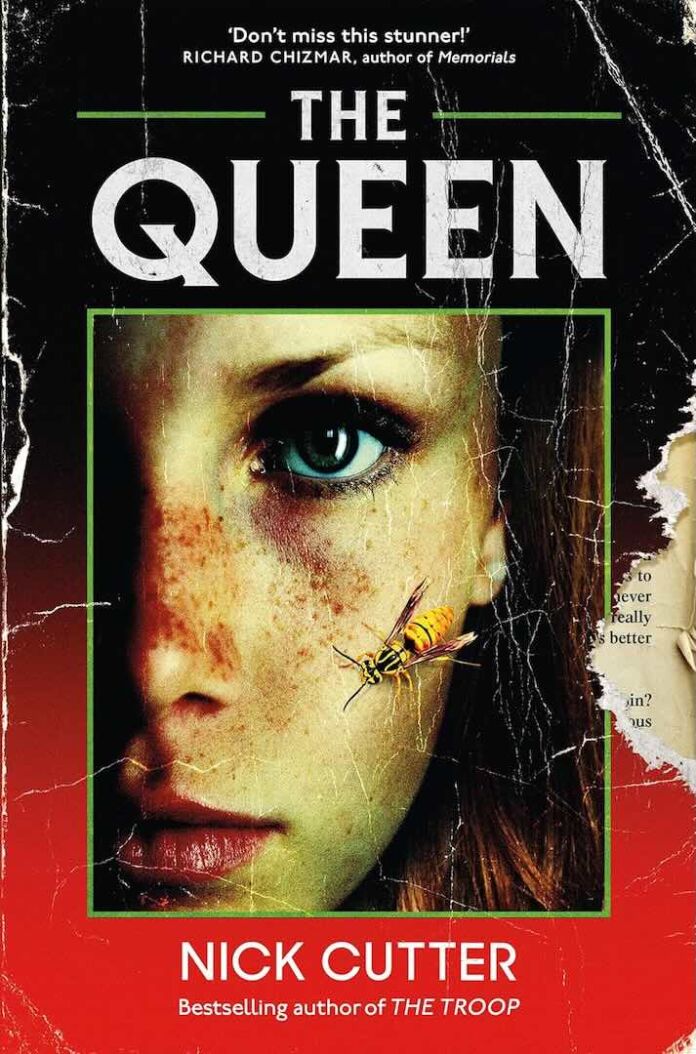In Nick Cutter’s latest horror masterpiece, The Queen, we dive deep into a disturbing narrative that expertly blends body horror, psychological thriller, and a poignant exploration of teenage friendship. The story follows Margaret Carpenter as she unravels the terrifying truth about her missing best friend, Charity Atwater, who harbors a genetic secret that transforms her into something beyond human comprehension.
The Horror of Human Connection
The true genius of The Queen lies in its ability to make us question the nature of friendship and identity. Cutter crafts a narrative that’s simultaneously intimate and cosmic in its horror. The relationship between Margaret and Charity serves as the emotional anchor, while the scientific horror of Project Athena provides the otherworldly terror that Cutter has become known for.
Through Margaret’s eyes, we experience the gradual realization that her closest friend might have been something else entirely. The author masterfully plays with this duality – is Charity/Subject Six a monster wearing a human mask, or a human girl whose fate was decided before birth by scientific hubris?
Writing Style and Narrative Structure
Cutter employs a unique narrative structure that unfolds over a single day, yet encompasses years of friendship through flashbacks and recordings. The story is told through multiple formats – text messages, voice recordings, security footage, and direct narrative – creating a mosaic of horror that builds to an unforgettable crescendo.
The prose is sharp and visceral, typical of Cutter’s style but perhaps more refined than in his previous works like The Troop or Little Heaven. His descriptions of body horror are particularly effective, managing to be both grotesque and poetic:
“Her chest swelled as she took her last breath, as the ants costumed her in a bristling drapery. Billions upon billions bubbled over the Jeep: the Willys looked somehow deep-fried, coated in a crackly, spuming brown layer.”
Strengths
- Complex, layered characterization
- Innovative narrative structure
- Masterful building of tension
- Effective blend of personal and cosmic horror
- Strong emotional core beneath the horror elements
Character Development and Relationships
The heart of The Queen by Nick Cutter lies in its exploration of friendship. Margaret and Charity’s relationship is beautifully rendered, making the horror elements more impactful because we care about these characters. The supporting cast, particularly Harry Cook and Rudyard Crate, are equally well-developed, each serving as a mirror to different aspects of the central relationship.
Science Fiction Elements
While primarily a horror novel, The Queen by Nick Cutter incorporates fascinating scientific concepts regarding genetic manipulation and insect behavior. Cutter’s research into queen mandibular pheromones and social insect hierarchies adds a layer of plausibility to the fantastic elements of the story.
Areas for Improvement
- The pacing in the middle section occasionally feels uneven
- Some secondary characters could have been more fully developed
- Certain scientific explanations might be too complex for casual readers
- The epilogue, while powerful, might feel unnecessarily explanatory to some readers
Impact and Relevance
The Queen tackles themes that resonate deeply in our current moment: the ethics of genetic manipulation, the power dynamics between the wealthy and the poor, and the complex nature of female friendship. Cutter weaves these elements together without being heavy-handed, allowing readers to draw their own conclusions.
Comparison to Other Works
While The Queen shares DNA with other body horror classics like Cronenberg’s The Fly or John Carpenter’s The Thing, it carves its own unique territory. Fans of Cutter’s previous work, particularly The Troop, will recognize his talent for combining visceral horror with emotional depth, though The Queen represents a significant evolution in his storytelling capabilities.
Technical Execution
The multiple narrative formats could have been confusing, but Cutter handles them with impressive skill. The transitions between present-day action, flashbacks, and recorded messages feel natural and serve to heighten tension rather than disrupt it.
Final Verdict
The Queen is a remarkable achievement in horror fiction, successfully combining elements of body horror, psychological thriller, and character study. While it may not be for the squeamish, readers willing to brave its depths will find a compelling story about friendship, transformation, and the price of scientific ambition.
Recommended for:
- Fans of sophisticated horror fiction
- Readers who enjoy character-driven narratives
- Those interested in body horror and scientific themes
- Admirers of complex female relationships in literature
Not recommended for:
- Readers sensitive to body horror
- Those looking for traditional supernatural horror
- People who prefer linear narratives
- The squeamish or faint of heart
Concluding Thoughts
Nick Cutter has created something special with The Queen. It’s a horror novel that transcends its genre trappings to become something more profound—a meditation on friendship, identity, and the monstrous potential that lies within us all. While it may not be perfect, its ambition and execution make it one of the most compelling horror novels of recent years.
The lasting impression is not of its gruesome transformations or scientific horrors, but of the complicated bond between two young women, and how that bond persists even as one of them becomes something beyond human understanding. In this way, The Queen achieves what the best horror fiction aspires to: it terrifies us while making us feel deeply human.





